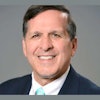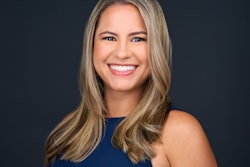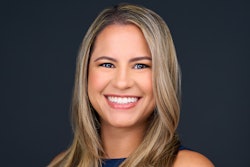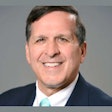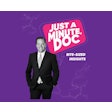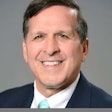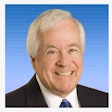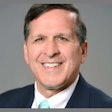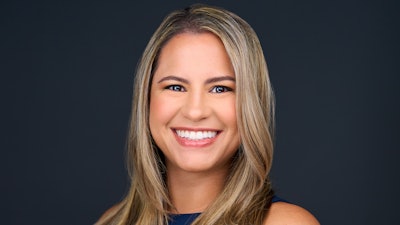
Fictional characters have often illustrated how teamwork and collaboration can be successful. We can all relate to the dynamic duo of Batman and Robin. There are also Han Solo and Chewbacca from "Star Wars," and in real life, don't forget Bill Gates and Steve Ballmer. Creating a dynamic duo of dentist and dental hygienist involves the work and commitment of both parties. A collaborative relationship between the dentist(s) and hygienist(s) must be developed before they can diagnose as a team.
A dentist's relationship with the dental hygienist should be symbiotic so the patient feels confident in the recommended care. Patients form relationships with their hygienist and dentist; if they don't sense the unity of thought, they may have to choose between them.
The melding of dentist and dental hygienist philosophies needs to be identified and created in the hiring process so that there is an understanding of each provider's core values, beliefs, and strengths. Only then can the trust of co-diagnosis take place.
Three-way communication
Co-diagnosing should be a three-way communication in the dental profession. Communication links the hygienist, dentist, and patient in diagnosing, treatment planning, and treatment outcome. Each person in this communication loop creates a strong bond in building a permanent relationship based on trust, confidence, and respect for each other's opinions.
Co-diagnosing between dentist and hygienist ensures that they have joined their skills and both clinicians are on the same page as far as the clinical needs of the patient. Input from both clinicians within the bounds of their licensing creates a cohesive team that the patient can trust to deliver the best care.
Many offices still need a system where the dentist and hygienist meet regularly to discuss patient care, goals, treatment options, etc. The dentist and hygienist often meet the patient at different times in the treatment room. The dentist and hygienist are like silos, which are self-contained structures, and information and ideas are not shared between silos.
Patients may hear different information from providers, leading to confusion and lower patient treatment acceptance. When patients have questions, they may get completely different answers, which is how trust is broken.
Navigating divergent perspectives
Consider this scenario: a distal-occlusal lingual cusp fracture on tooth #19, with a buccal groove fracture extending slightly past the cementoenamel junction accompanied by recurrent decay. Consulting five dentists for diagnosis and treatment plans may yield five distinct answers, each dependent on the doctor’s schooling, experience, successes, failures, and evidence-based practice.
One dentist might advocate herodontics, suggesting saving tooth #19 through crown lengthening, root canal, core, and crown procedures. Another may propose extracting the tooth and replacing it with a bridge. A third might suggest extraction and implant placement for tooth #19. Some may recommend extraction without further intervention, while a fifth might temporize the tooth to observe its response.
Each dentist's recommendation comes with its rationale, highlighting the diversity in treatment approaches. For effective co-diagnosing, dental hygienists and dentists must align on the "why" behind their recommendations/philosophies.
Creating collaborative co-diagnosing protocols
Co-diagnosis techniques can be created by taking the following actions:
- Bust through silos by sharing information and philosophies in regularly scheduled meetings. Patients often turn to dental hygienists for insights into planned treatments, seeking reassurance that the dentist is knowledgeable and capable.
- Create clear treatment guidelines with all clinical providers.
- Discuss philosophies with each other and include the scheduling team to avoid miscommunication with the hygiene department, such as adding x-rays, fluoride, and sealants just because the patient is eligible for that service with their insurance plan.
- Create a protocol for when and how the exam will be done during the hygiene appointment (at the end or when the doctor is available). Will it be a long exam where the patient must be moved out of hygiene?
Collaboration within the team is created with the following actions:
- An understanding of each other's personalities and work styles and sharing challenges and frustrations
- The dentist's willingness to educate and the hygienist's willingness to learn restorative philosophy and treatment options
- Creating agreements and protocols for the following:
- Defining children's prophy times and patients with limited dentition
- The protocol for using x-ray lead shields
- The protocol for when and how many intraoral photos are taken
- Protocols for using antimicrobial adjunctives
- Protocols for applying silver diamine fluoride
- Protocols for flossing, the brand of toothpaste used, and mouth rinse
- Protocols for the application of fluoride varnish
- Protocols for the application of pit and fissure sealants
- Protocols for oral cancer screening and devices
- Current protocols and recommendations for evaluating lesions, including potentially malignant oral disorders
- Protocols for blood pressure measurement and discussing the potential for cardiovascular stimulation (e.g., increased heart rate, increased blood pressure)
- Protocols for emergency care of a hypertensive crisis
- Protocols for clinical recommendations for using sucrose-free polyol chewing gums, xylitol dentifrices, and chlorhexidine in preventing caries
Differences in opinion and applications can cause resistance or unwanted acceptance to keep the peace.
When dentists and dental hygienists view each other as valued partners, we can expect increased patient retention, profits, and a team culture that attracts like-minded team players.
Estela Vargas, CRDH, is the founder and CEO of Remote Sourcing, a dental insurance billing and revenue recovery service. She is a graduate of Miami Dade College's dental hygiene program. Vargas' extensive background in the clinical arena of dentistry is coupled with her experience as a practice administrator and business executive.
The comments and observations expressed herein do not necessarily reflect the opinions of DrBicuspid.com, nor should they be construed as an endorsement or admonishment of any particular idea, vendor, or organization.



